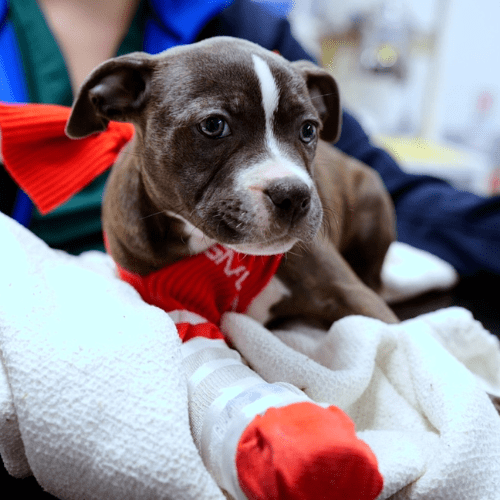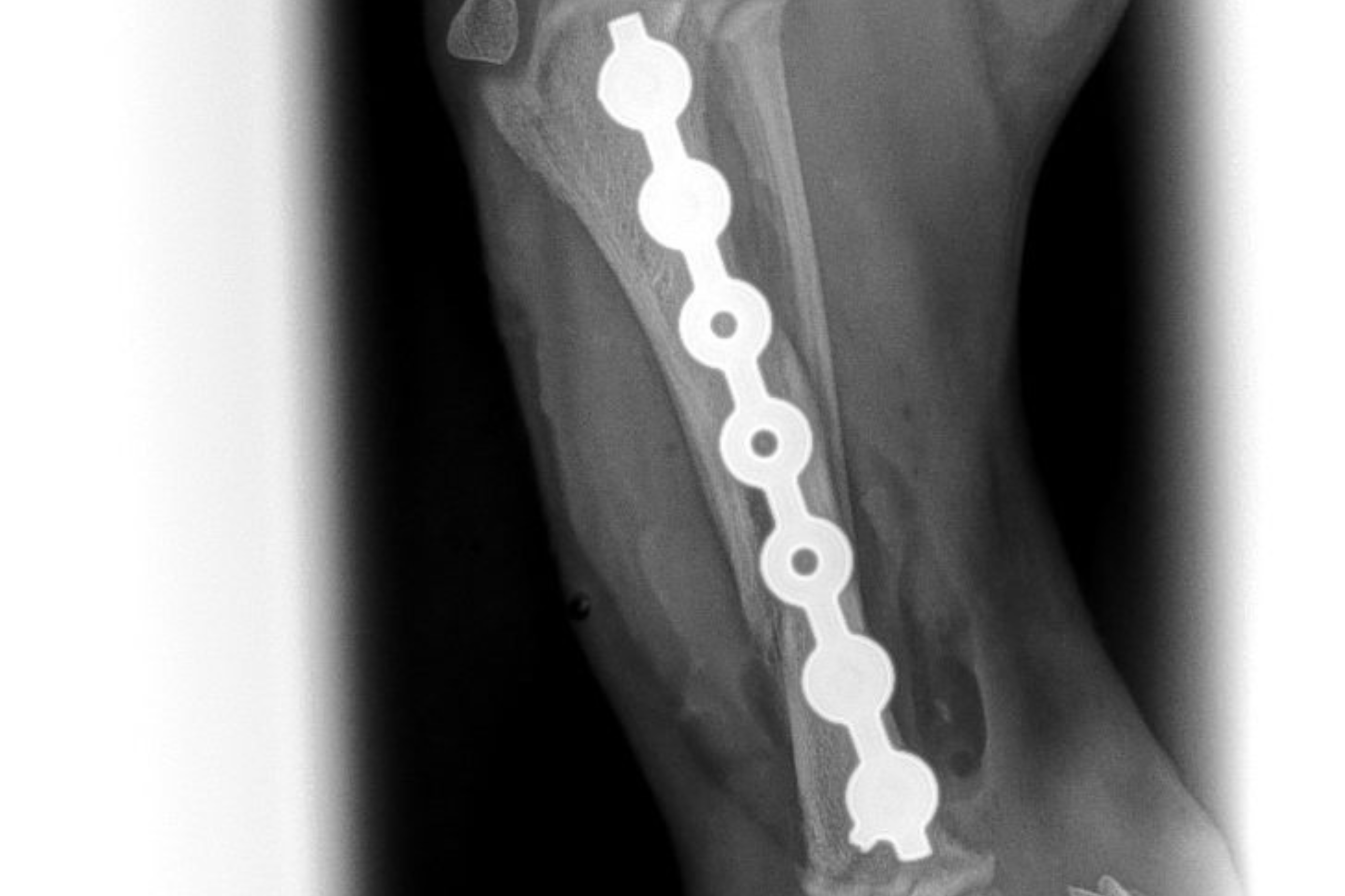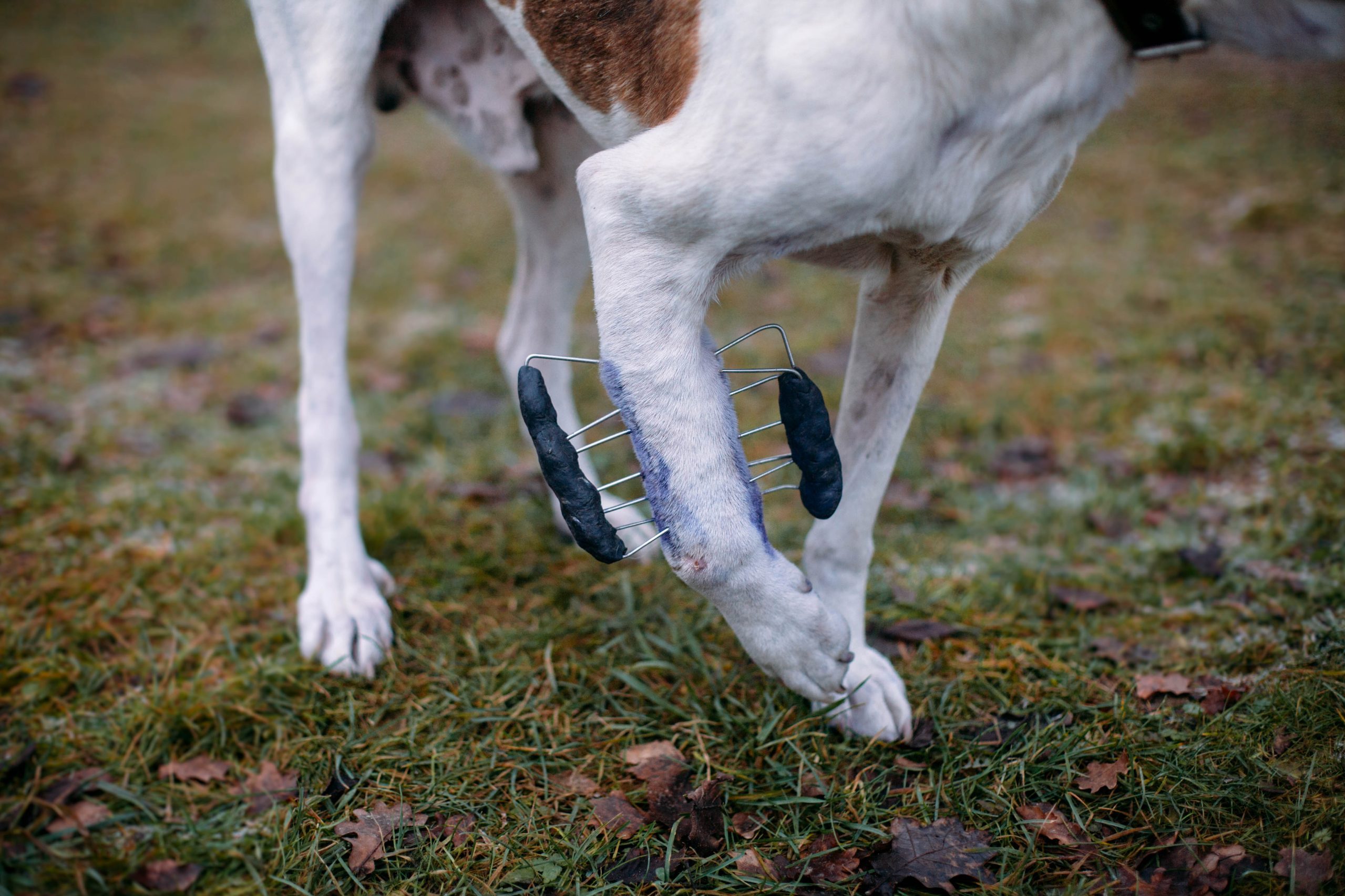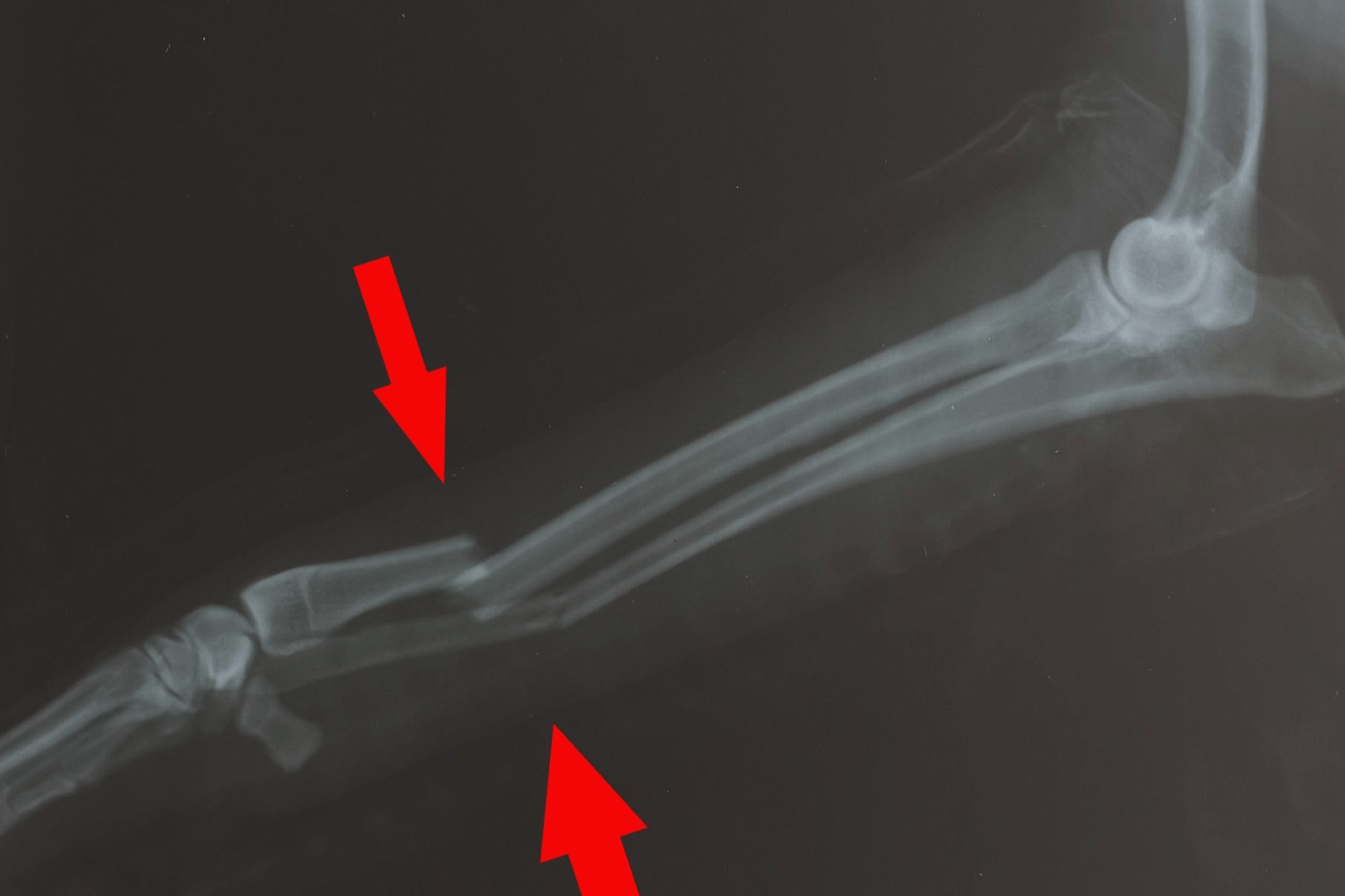Fractures
Orthopaedics
Types of Fractures
Complete Fracture
Incomplete Fracture
The bone is partially cracked but not completely broken.
Open (Compound) Fracture
The broken bone pierces through the skin.
Closed Fracture
The broken bone does not penetrate the skin.

Non-Surgical Treatment Options
Rest
Rest alone is generally suitable for certain types of dog or cat fractures, particularly if the fracture is stable and not severely displaced. Fractures that are amenable to healing through rest typically fall into the category of simple or non-displaced fractures.
Casting
Surgical Treatment Options
Internal Fixation

What is Internal Fixation?
Internal fixation is a widely used surgical procedure for repairing fractures in pets, especially in dogs and cats. This method employs metal implants, including plates, screws, pins, or rods, to stabilise broken bones from within the body. By providing a more secure environment for bone healing than external methods, internal fixation ensures proper alignment and facilitates a quicker recovery process.
Why is internal Fixation needed?
Fractures in pets can occur due to accidents, falls, or trauma. When a bone breaks, it must be aligned and stabilized to heal correctly. In many cases, especially with complex or severe fractures, internal fixation is the most effective solution. This method:
- Ensures precise alignment of bone fragments.
- Provides strong and stable support during the healing process.
- Reduces the need for external casts or splints, which can be uncomfortable for pets.
Benefits of Internal Fixation
Internal fixation is often the best choice for complex fractures, offering:
- Optimal Alignment: Ensures that bones heal in the correct position.
- Enhanced Stability: Provides strong internal support, minimizing movement at the fracture site.
- Comfort: Reduces the need for external casts or splints, which can be cumbersome and uncomfortable.
What are the risks of Internal Fixation?
Potential risks or complications of internal fixation in pets include infection, implant failure, delayed or non-union (failure of the bone to heal properly), and damage to surrounding tissues or nerves. Proper surgical technique, post-operative care, and monitoring can help minimise these risks.
External Fixation

What is External fixation?
External fixation is a surgical technique employed to stabilize fractures in pets by utilising an external frame along with pins or wires that are inserted into the bone through the skin. In contrast to internal fixation, which involves the placement of implants inside the body, external fixation maintains the stabilising devices outside the body, allowing for flexibility and adjustability throughout the healing process. This approach is particularly beneficial for managing complex fractures, open fractures, or cases where internal fixation is not a viable option.
What is External fixation needed?
External fixation is often chosen in cases where:
- Complex Fractures: The fracture is highly comminuted (broken into multiple pieces), making internal fixation challenging.
- Open Fractures: The bone has pierced the skin, increasing the risk of infection and complicating internal fixation.
- Infection or Healing Issues: Conditions like osteomyelitis (bone infection) may require the use of external devices to allow ongoing treatment while stabilising the bone.
- Growth Plates: In younger animals, external fixation can avoid damage to growth plates, which are crucial for bone development.
Benefits of External fixation
External fixation offers several benefits, especially in challenging fracture cases:
- Versatility: It is suitable for a wide range of fractures, including those that are open or highly complex.
- Adjustability: The external frame can be modified during the healing process to ensure optimal bone alignment.
- Minimally Invasive: Compared to some internal fixation methods, external fixation requires smaller incisions and can be less invasive overall.
What are the risks of External Fixation?
Complications of external fixation may include pin tract infection, loosening or bending of pins or screws, damage to surrounding tissues, and delayed or non-union (failure of the bone to heal properly). Regular veterinary monitoring and appropriate post-operative care can help minimise the risk of complications.
FAQ
How can I tell if my pet has a fracture?
Signs of a fracture include limping, refusal to bear weight on a limb, swelling, visible deformity, and pain when the area is touched. If you suspect a fracture, seek veterinary care immediately.
What causes fractures in pets?
Fractures can result from accidents, falls, being hit by a car, or other traumatic events. Sometimes, underlying conditions like bone tumors or metabolic diseases can weaken bones, making fractures more likely.
How long does it take for a pet to recover from a fracture?
Fractures can result from accidents, falls, being hit by a car, or other traumatic events. Sometimes, underlying conditions like bone tumors or metabolic diseases can weaken bones, making fractures more likely.

Book a Consultation:
Give your pet the care they need to heal quickly. Schedule a fracture consultation today and get them back to their happy, active self!

